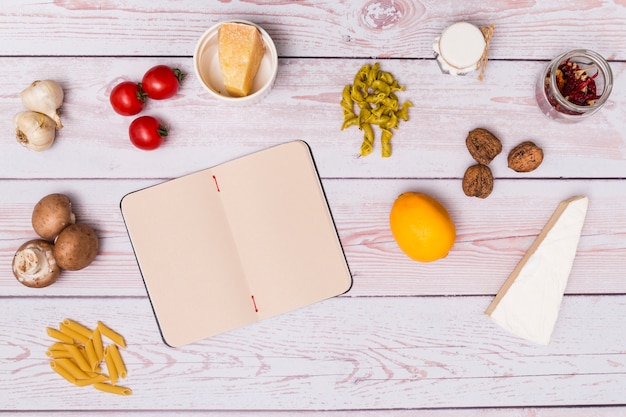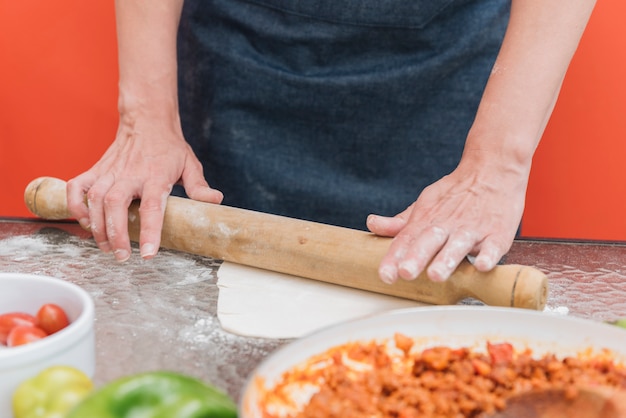Let's face it, there's something undeniably elegant about a perfectly cooked fillet mignon. It's a dish that screams "special occasion," but it doesn't have to be reserved for fancy restaurants or celebratory dinners. You can absolutely achieve that same level of melt-in-your-mouth tenderness and rich flavour at home, I promise!
This guide is your one-stop shop for all things mignon, from choosing the perfect cut to mastering the art of searing and achieving that elusive juicy centre. I'll be sharing my own tips and tricks, born from years of experimenting and occasionally burning the odd piece (we all have those moments, right?). I'll even sprinkle in some personal anecdotes, because cooking, let's be honest, is just as much about the journey as the destination. So grab your apron, sharpen your knives, and let's get cooking!
(Part 1) Choosing Your Mignon

Picking the Right Cut
Firstly, you need the right cut of meat. Now, my personal favourite for a show-stopping mignon is, without a doubt, a beautiful fillet mignon. It's the tenderest, most flavourful cut from the centre of the tenderloin, and it simply melts in your mouth. It's like a little culinary masterpiece!
But, if you're feeling adventurous or are working with a tighter budget, you can also use a tenderloin roast (just slice it into individual pieces) or even a strip steak. Just remember, the key is to choose a cut that's naturally tender and marbled.
Checking the Quality
Now, before you get carried away, let's take a moment to appreciate the quality of your meat. I always give it a good sniff – it should smell fresh and clean, not at all gamey or sour. Then, I give it a good look over. It should have a nice, even red colour, and be firm to the touch. If it's slimy or has a dull colour, it's a sign it hasn't been handled properly.
Taking It Home
You've found your perfect piece of mignon, congrats! Now it's time to take it home and make sure it stays in tip-top shape. Pop it in the fridge as soon as possible, and wrap it tightly in plastic wrap or foil. This will prevent it from drying out and preserve its flavour. Don't even think about leaving it out on the counter – it'll start to spoil, and we don't want that!
(Part 2) Prepping Your Mignon

The Art of Patting
Okay, we're getting into the nitty-gritty now. Before you start cooking, you need to prep your mignon. This means a good old-fashioned patting, using a paper towel to gently pat dry any excess moisture. Why? Because we want a beautiful, crisp sear on the outside. Trust me, it'll make all the difference.
Seasoning with Finesse
Now, this is where you can really have some fun – seasoning! This is where you can truly make your mignon your own. I like to keep it simple with just salt and pepper, but you can add herbs like rosemary or thyme, a little garlic powder, or even a pinch of paprika. Just remember, the goal is to enhance the natural flavour of the meat, not mask it completely.
(Part 3) Masterful Sear and Sizzle

Choosing Your Weapons
Alright, let's get this party started! You've got a beautiful piece of meat ready to go, so you need the right tools for the job. My go-to is a trusty cast iron skillet. It heats up quickly and evenly, giving you that perfect, golden-brown sear. Plus, there's something satisfying about using a cast iron skillet. It adds a bit of rustic charm to the whole cooking process.
You can also use a grill pan, which is great for adding those lovely grill marks. Or, if you're feeling fancy, a heavy-bottomed pan will do the trick.
The Hot Hot Hot
Before you even think about adding your mignon to the pan, get that bad boy screaming hot. Seriously, the hotter the pan, the better the sear. We're talking blazing hot, almost smoking hot. That intense heat will create a beautiful crust on the outside, locking in all those delicious juices.
Searing Like a Pro
Now, take a deep breath, and gently place the mignon in the hot pan. Don't overcrowd the pan – give each piece a little space to breathe. And here's the most important part: resist the urge to move it! Let it cook undisturbed for about 3-4 minutes per side, until you get that perfect golden-brown crust.
(Part 4) Cooking to Perfection
Knowing Your Meat
Okay, now it's time to get to know your mignon a little better. If you're after a rare steak, it should feel warm to the touch in the centre. A medium-rare steak will have a slightly warmer centre, while a medium steak will be warm throughout.
Keeping It Moist
We want to keep that mignon juicy, so keep an eye on the heat. Turn it down to medium-low. If your pan is looking a little dry, add a bit of butter or olive oil.
Don't Touch It!
I know, I know, it's tempting to keep peeking and poking at your mignon. But resist that urge! Every time you poke it, you release those precious juices, and that's the last thing we want. Trust the process, and let it cook undisturbed. It'll take about 8-10 minutes for a medium-rare steak, so just be patient.
(Part 5) Resting Time
Giving It a Break
You're almost there! Your mignon is cooked to perfection, but before you dive in, let it have a little rest. Place it on a cutting board and cover it loosely with foil for about 5-10 minutes. This allows the juices to redistribute, resulting in a more tender and flavorful steak. I know it's hard to wait, but trust me, it's worth it!
(Part 6) Serving and Savouring
Presenting the Masterpiece
After its short rest, your mignon is ready to shine! Slice it against the grain – this will make the texture even more tender. I like to serve mine with a side of roasted vegetables, mashed potatoes, or even a simple salad.
Garnishing with Flair
Now, it's time to add the finishing touches. A sprinkle of chopped parsley, a few sprigs of rosemary, or even a dollop of butter will add a touch of elegance. And don't forget a drizzle of your favourite sauce – it's the cherry on top!
(Part 7) Don't Be Afraid to Experiment
Mixing it Up
One of the things I love most about cooking is that you can always experiment and find what works best for you. Try different seasonings, sauces, and sides to create your perfect mignon combination. If you're feeling brave, try grilling your mignon for a smoky flavour.
Taking Notes
Keep a little notebook handy to record your culinary adventures. Note down the seasonings you used, the cooking time, and your overall thoughts. This will be a helpful reference for future experiments.
Trust Your Instincts
Ultimately, the best way to learn is to trust your gut and have fun. Don't be afraid to make mistakes – that's how we all learn and grow as cooks.
(Part 8) Beyond the Basic
Mignon for Every Occasion
Mignon isn't just for fancy dinners. It's perfect for a quick weeknight meal, a casual gathering with friends, or even a romantic dinner for two. The beauty of this dish is its versatility.
Cooking for a Crowd
If you're cooking for a crowd, remember to adjust the cooking time accordingly. Use a meat thermometer to ensure your mignon is cooked to the desired level of doneness.
Thinking Ahead
If you know you'll be busy, you can always prepare your mignon in advance. Cook it to your desired doneness, let it cool completely, and then store it in the refrigerator for up to three days. When you're ready to serve, reheat it in a preheated oven or on the stovetop.
(Part 9) Tips and Tricks from the Pros
Keeping It Warm
If you're serving a large group and want to keep your mignon warm, place it on a baking sheet lined with foil and keep it warm in a low oven (200°F/95°C) until ready to serve.
Achieving a Crispy Crust
For an extra crispy crust, use a hot cast-iron skillet and sear the mignon for a longer period of time, about 5-7 minutes per side.
Adding Flavor
For an extra boost of flavour, marinate your mignon for a few hours before cooking. You can use a simple marinade of olive oil, garlic, and herbs.
Don't Overcook It
Remember, the key to a tender and delicious mignon is to not overcook it. Use a meat thermometer to check for doneness and take it off the heat as soon as it reaches the desired temperature.
(Part 10) FAQs
What's the difference between filet mignon and tenderloin?
Fillet mignon is a small, cylindrical cut taken from the thickest part of the tenderloin. Tenderloin, on the other hand, is the entire muscle, which can be roasted whole or cut into smaller pieces.
How long should I cook my mignon for?
The cooking time will vary depending on the thickness of the mignon and the desired level of doneness. As a general rule of thumb, a 1-inch thick mignon will take about 8-10 minutes for a medium-rare steak.
What's the best way to know when my mignon is cooked to perfection?
The best way to check for doneness is with a meat thermometer. A medium-rare steak should have an internal temperature of 130°F (54°C).
What are some good sauces to serve with mignon?
There are endless possibilities when it comes to sauces for mignon. Some popular choices include béarnaise sauce, peppercorn sauce, and red wine sauce. You can also get creative and experiment with your own flavour combinations.
Can I freeze mignon?
Yes, you can freeze mignon for up to 3 months. Wrap it tightly in plastic wrap and then in aluminium foil before freezing. To thaw, place it in the refrigerator overnight. Remember, frozen meat will lose some of its moisture, so it's best to cook it right after thawing.
Everyone is watching

Corn on the Cob: The Ultimate Guide to Perfectly Cooked Ears
Healthy MealsAh, corn on the cob. Just the name evokes images of sunny days, barbecues, and that sweet, juicy flavour that ...

Perfect Pork Roast Oven Cooking Time: A Guide to Delicious Results
Healthy MealsThere's something truly satisfying about a perfectly roasted pork. The aroma alone is enough to make your mout...

Ham Cooking Time: How Long to Bake, Smoke, or Boil a Delicious Ham
Healthy MealsAh, ham. It's a classic, isn't it? A real crowd-pleaser, especially around holidays. And when done right, it'...

Scallops: The Ultimate Guide to Perfect Cooking
Healthy MealsAh, scallops. Those delicate, sweet, and utterly delicious morsels of the sea. They hold a special place in my...

Spaghetti Squash: The Ultimate Guide to Cooking and Serving
Healthy MealsRemember that time you saw spaghetti squash at the supermarket, looking all bumpy and strange, and thought, "W...
